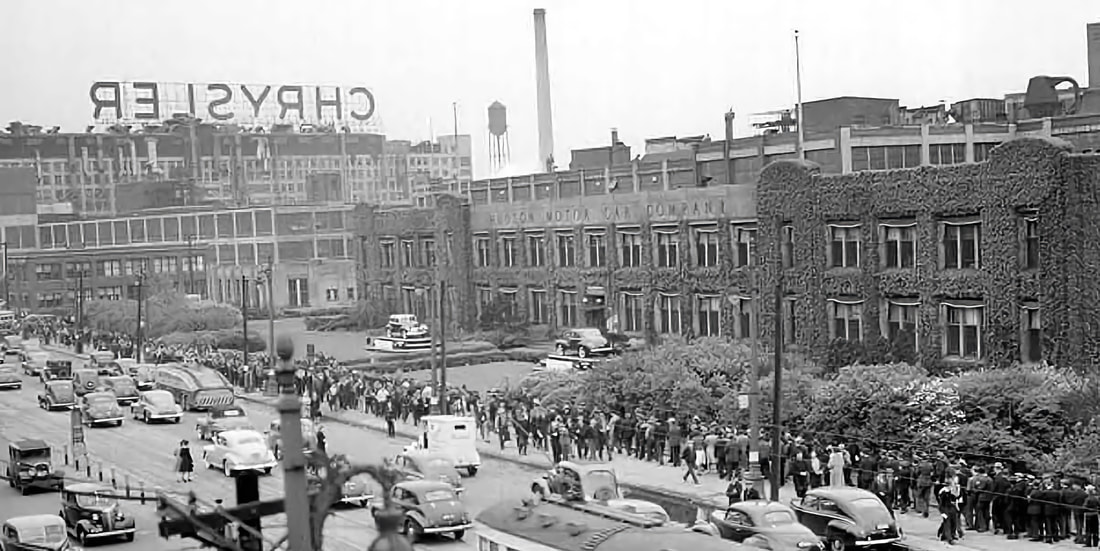|
Destruction In the Wake of Deindustrialization It has been a decade since the residents of Flint, Michigan confronted a severe water crisis. City officials detected elevated levels of lead as well as the spread of legionella bacteria. The media circulated images of town hall participants holding contaminated brown water and stacks of bottled water. Even today, the children exposed to lead continue to suffer from its effects, including increased behavioral issues and a higher rate of miscarriages. Although a group of scientists have now determined Flint’s water to be as safe as that of any other city in Michigan, many residents continue to harbor doubts about the quality of their drinking water. The Shining Days of the Rust Belt Flint, Michigan was once seen as an ideal city for post-World War II residents to pursue the American Dream. Situated in the Rust Belt region, the backbone of America’s economy after the defeat of the Nazis and the destruction of Europe, cities in states like Michigan and Ohio were equipped with factories ready to support the post-war reconstruction efforts. The manufacturing of automobiles played a particularly prominent role in providing well-paying, unionized jobs across the Midwest, spanning from Wisconsin to Massachusetts. Detroit, Michigan, in particular, experienced remarkable growth, emerging as the fifth largest city in the United States by 1950 and boasting a population of 1.8 million people. The Great Lakes location offered additional employment opportunities through ports that facilitated the transportation of raw materials and finished products for the global market. On the East Coast, textile factories provided jobs for European immigrants who did not venture to the Midwest. With an unemployment rate as low as 2.7% and affordable real estate throughout the country, it seemed that these cities would continue to flourish and prosper. But the interests of the wealthy elite and politicians of course took precedence over the needs of working families, and the American Dream soon transformed into a veritable veritable nightmare. American DeIndustrial Revolution The lives of those residing in the Rust Belt during the 1950s were drastically upended as the process of deindustrialization and offshoring gained momentum in the 1960s and 1970s. Instead of increasing worker wages and complying with environmental and labor regulations, corporations simply shifted their administrative and manufacturing operations to other countries. Nations like India, Pakistan, and China swiftly emerged as top choices for Western corporations due to their low wages and lax regulatory oversight. “Free trade” agreements and treaties, such as those establishing the Organization for Economic Cooperation, provided further incentives to corporations in the form of tax breaks. As a result, these companies were able to save up to 70% on staffing costs by paying significantly lower salaries. Within decades, the Rust Belt was stripped of its manufacturing jobs, leading to a mass exodus of residents in search of employment opportunities. Detroit, in particular, experienced a significant population decline. From its peak population of 1.8 million in 1950, almost a million residents left the city, resulting in a remaining population of only 945,000 by 2000. The Rust Belt continues to witness a downward trend in population; the once-thriving factories that were once the lifeblood of vibrant and growing communities now stand dilapidated, symbols of an empire in decline. Jobs Replaced with Crime and Addiction Karl Marx wrote extensively about the consequences of the industrial revolution in Europe and how the specialization of tasks led to workers feeling disconnected from their work. Instead of being known for their specific trade, like a blacksmith or a baker, many were thrust into the industrial workforce, perceiving themselves as mere cogs in an impersonal and unfamiliar machine. While the transition must have been challenging for those in the early stages of the industrial revolution, subsequent generations adapted, and industrial cities became a desirable destination for immigrants to the United States. However, the residents of the Rust Belt, whose industrial jobs were sent overseas in the pursuit of cost savings for their employers, now face a different form of alienation. Unlike those who migrated from rural areas to cities, they lack a clear path forward and are left to navigate their future independently. Instead of being integrated into a new world where they felt like valuable components of a machine, they are now remnants of a machine that abandoned them, disconnected and adrift. Drawing from the many progressive philosophers, like Marx, who developed the epistemological approach of dialectical materialism, we can apply this line of thinking to understand society as an interconnected system where all elements continuously change and influence the whole. The deindustrialization of the Rust Belt created a significant void in the lives of its residents, and it appears that drug addiction and crime have filled that void. The Rust Belt, particularly hard-hit by the opioid crisis, has experienced a surge in overdose cases. Dayton, Ohio, a city with a similar history to Detroit, once a thriving hub, now stands as a relic of the past. Dayton and Montgomery County have been ravaged by opioids, with a 2017 report revealing that the coroner’s office ran out of space for bodies due to fourteen overdoses in a single week. This account represents just one county in the Rust Belt, and experts estimate that numerous unreported overdoses occur. Drug addiction is not the only aspect of the community that has suffered. The decline in population and increase in vacant homes have led to a decrease in local property taxes, impacting the education system and children in particular. A 2013 study highlighted that only 26% of third-graders were reading at grade level, while less than 1% of 11th and 12th graders were adequately prepared for higher education. School districts, like Lorain, face the constant threat of state receivership due to their performance, but previous instances of state intervention have not yielded better results. Is There Any Hope? On July 1, 2023, a Federal Court in Ohio made a significant ruling, stating that Walgreens, CVS Health, and Walmart had contributed to a “public nuisance” by excessively promoting the benefits of opioid drugs while downplaying their negative effects. Although this ruling does not undo the years of devastation caused by opioids, it is important to acknowledge that residents in places like Ohio were exploited by pharmaceutical companies. Will the Rust Belt ever regain its glory days of the 1950s? It is unlikely to happen in the near future. However, those who lived through those optimistic times are still among us. We continue to hear stories from our elders about affordable homes and well-paying jobs, and younger generations are growing increasingly discontented with the limited employment opportunities and rising real estate costs in today’s dominant service sector economy. By acknowledging the consequences of deindustrialization in the Rust Belt, we can strive for revitalization and take measures to prevent similar events from occurring in the future. Archives August 2023
2 Comments
Charles Brown
8/29/2023 10:44:40 am
http://take10charles.blogspot.com/2023/06/post-fordism-and-geographical.html
Reply
Charles Brown
8/29/2023 10:48:33 am
post-Fordism and geographical scattering of the points of production c b Tue, 13 Oct 2009 05:20:36
Reply
Leave a Reply. |
Details
Archives
July 2024
Categories
All
|


 RSS Feed
RSS Feed